
by Paul Levy
At the present moment our country—and our world—are insanely polarized. If humanity is seen as a single macro-organism, it is as if there is a primordial dissociation—a split—deep within its very source. Our species is suffering from what the great doctor of the soul C. G. Jung calls a “sickness of dissociation,” which is a state of fragmentation deep within the collective unconscious itself that has seemingly spilled outside of our skulls and has taken the form of collective events playing themselves out en masse on the world stage. Jung writes, “And just as for the individual a time of dissociation is a time for sickness, so it is in the life of nations. We can hardly deny that ours is a time of dissociation and sickness.”[1] And yet, everything in our world has at least two sides, which is to say that our sickness of dissociation is not solely pathological. To quote Jung, “the sickness of dissociation in our world is at the same time a process of recovery, or rather, the climax of a period of pregnancy which heralds the throes of birth.”
A time of dissociation … is simultaneously an age of rebirth.[2]
Reflecting upon this deep process of dissociation that is playing out in our world through a psychological lens can be potentially illuminating. Dissociation, as Jung points out, is related to birth. We can deepen our understanding of dissociation by shedding light on the archetypal process of birth – i.e., The Incarnation. Contemplating the West’s prevailing myth of the birth of God—the Christ event—psychologically, which is to say symbolically (i.e., as if it is a dream of our species) might help us gain some deeper insights into the cure for our sickness of dissociation. Contemplating the Christ event symbolically, Jung writes, “Had he [God] only given an account of his action to himself, he would have seen what a fearful dissociation he had got into through his incarnation.”[3]
In contemplating the Incarnation of God symbolically, Jung points out that the opposites became totally and completely polarized—dissociated—in the figures of Christ and Satan. Speaking about the divine Incarnation, Jung writes that “the opposites in him [God] must fly apart: here good, there evil.”[4] In other words, as soon as Christ—the incarnation of God—shows up on the scene with, in Jung’s words, his “superabundance of light on one side,” it is no accident that Satan enters the scene with “an all the blacker darkness on the other.”[5] Just like shadows belong to light, it is as if these light and dark figures are inseparable, reciprocally co-arising together, inter-related aspects of a greater unity. Something deeper—of a higher order or dimension of our being—is being revealed to us through their interplay.
When the opposites materialize themselves in a totally polarized way in our world—be it during the time of the Christ event over two thousand years ago or as we see in the world today—this could be seen as an emergent phenomena, i.e., the revelation of a radically holistic unity that informs, contains, embraces and transcends both pairs of the opposites. This is to say that the polarization in today’s world can be likened to a shadow on the wall of Plato’s cave being cast by something beyond itself. We should keep our eyes open for this deeper unifying process that is announcing itself through the process of such extreme polarization evident in our world today.
Jung refers to the “transconscious character of the pair of opposites,”[6] by which he means that the opposites don’t belong to the ego, but are supraordinate to it, i.e., are an expression of what he calls the Self, the wholeness of our true nature. When unleashed—like unrestrained wild animals—“the opposites” can become, as Jung describes “the warring elements of primeval chaos.” This can be unconsciously and tragically lived out in a literal way – through endless war, for example. A new realization, however, can potentially be born out of the conflict of these primordial opposites, as Jung points out, “just because they are in conflict,” in which “what looked like death and destruction” is actually the labor pains of something completely novel coming into form. This is to say that lying within conflict is the potential for a new birth.
Christ on the cross can be seen as a living symbol of this very process, for as Jung points out, the crucifixion itself perfectly symbolizes consciously holding the tension of the opposites in such a way that something deeper—the resurrected body—emerges. Symbols, by their very nature synthesize what seem to be contradictory opposites into a higher unity. Seen symbolically, the crucifixion/resurrection (these two processes go together, i.e., are parts of a deeper process) is a revelation that depicts this relation between dissociation and the birth of something new. On the cross, God is seemingly abandoned by—dissociated from—himself, while at the same time, paradoxically, never being more himself. Seen symbolically, God’s state of being dissociated from himself literally becomes the doorway for his birth into, as and through our world.
It is an archetypal idea—found, for example, in the Kabbalah, that some form of conflict, destruction or dis-integration is a prerequisite for individuation, necessary for the birth of the Self. To quote Jung, “the self is made manifest in the opposites and in the conflict between them; it is a coincidentia oppositorum [coincidence of opposites]. Hence the way to the self begins with conflict.”[7] Opposites are intrinsic to the nature of the paradoxical Self, i.e., man’s totality. In Jung’s words, “All opposites are of God [analogous to the Self], therefore man must bend to this burden; and in so doing he finds that God in his ‘oppositeness’ has taken possession of him, incarnated himself in him. He becomes a vessel filled with divine conflict”[8]
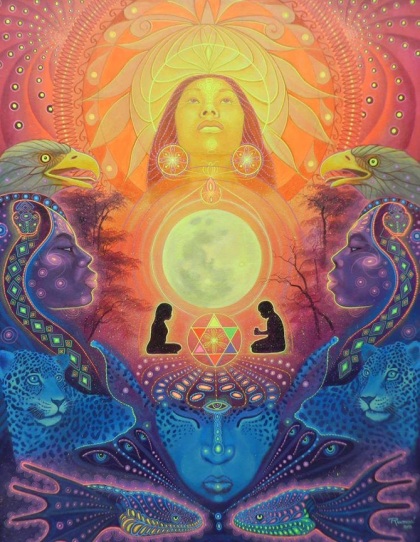
Though archetypal in nature, the resulting conflict shows up within each of us individually in our own unique way, as our conscious personality is brought face to face with the counter-position of the unconscious. To the extent that this inner conflict is not dealt with consciously in a creative confrontation with the opposites via the process of individuation, it will be unconsciously acted out—via projection—destructively in the external world at large.
Speaking symbolically, Jung writes that the figure of Satan “represents the counterpole of the tremendous tension in the world psyche which Christ’s advent signified.”[9] In other words, Jung is interpreting these theological events as expressions of a process whose source is the collective unconscious of humanity. Similarly, the deep dissociation that is playing out on the world stage today can be seen as a reflection of the polarization that exists in the collective psyche, which is to say it is a collective expression of the polarization within each one of us.
Recognizing this correlation between the inner and outer can be incredibly helpful. Instead of pathologizing ourselves, identifying with and personalizing our inner conflict (which can lead to despair and depression), we can re-contextualize our experience of the conflict, re-cognizing that the inner tension many of us are feeling is a reflection of a deeper, archetypal process that pervades the field. Addressing “the apparently unendurable conflict” that someone was inwardly going through, Jung writes that this is “proof of the rightness of your life.”[10]
This realization: that when we are experiencing inner conflict we might be picking up something in the collective field – can also help us to recognize that instead of being separate from the world at large, we are plugged into it, i.e., deeply interconnected expressions of it. In another letter, Jung writes, “One shouldn’t evade this conflict by escaping into a premature and anticipated state of redemption, otherwise one provokes it in the outside world. And that is of the devil.”[11] Evading this conflict by identifying with one of the opposites and splitting off from, and hence, projecting out the other, we unconsciously “dream up” this inner conflict to get acted out in full-bodied form in the outside world. In channeling and then inwardly metabolizing the underlying conflict that pervades the greater field, however, we become oracles and shamans for the world—in potential—depending upon whether we are able to creatively and constructively express what is moving in and through us.
Jung is not alone in pointing out the cosmic dissociative disorder from which God seems to be suffering. Sci-Fi author Philip K. Dick writes, “the Godhead is ipso facto divided and pitted against itself; it assumes an antithetical interaction with itself…. Hence the Godhead is in infinite crisis…. And this ur-paradox in the macrocosm has mirrored effects in every microform down throughout creation.”[12] In a situation where the macrocosm mirrors the microcosm and vice versa, this dissociation in the Godhead is reflected in every microform (each one of us). The dialectical tensions of the cosmos are mirrored in the psyche of each individual.
Our state of dissociation can be likened to a primordial rupture, which is a form of existential trauma on a cosmic scale that has become the in-forming force behind human history itself, conditioning the experience of each individual, as well as our species as a whole. It is as if the universe itself has been subject to a cosmic “dissociative reaction,” in which the underlying unity of the universe has been fragmented into a multiplicity of seemingly compartmentalized selves. Seen as a whole person, it is as if the undivided wholeness of the universe has split into multiple sub-personalities who are dissociated from and seemingly separate from each other, desperately in need of recognizing their inter-connection so as to come together and reintegrate.
From the Kabbalistic point of view, this cosmic dissociation, a seeming crisis in creation itself, is no accident, but is built into the very design of the universe. It is as if the ground of being had to become estranged from itself in order to become more fully itself so as to arrive at a new degree of self-knowledge and inner coherence. Without a break in its symmetry, the true nature of Being would have no way to encounter and become aware of itself. In other words, there is—potentially—a divine method to the madness that is playing out.
Dick comments, “Thus the rupture in the Godhead was necessary, given its (the Godhead’s) drive to complete itself as kosmos. It was driven inexorably to this schism; hence the one became two, and the dialectic came into existence, as it became increasingly aware.”[13] Dick is pointing out the deeper teleology encoded within the process of God’s dissociation: the very split in the Godhead is the way, through a constantly evolving dialectic, that God is becoming “increasingly aware,” i.e., conscious. And we find ourselves implicated—i.e., playing a key role—in this cosmic process.
Where did this sickness of dissociation come from? To quote Jung, “When man became conscious, the germ of the sickness of dissociation was planted in his soul.”[14] The process of becoming conscious is symbolized in our sacred texts by the eating of the forbidden fruit of the Tree of Knowledge in the Garden of Eden that gave us knowledge of the opposites – i.e., good and evil. This awareness shattered the primal state of unconscious identification and fusion with the world. This is the moment when, in Dick’s words, “one became two” and self-consciousness was born – we become aware of ourselves in such a way so as to not be one with ourselves. This process, however, is an integral part of, reflects—and initiates—the evolution of human consciousness. Because the origin of this impersonal, universal and archetypal process is in consciousness itself, the cure for our sickness of dissociation is to be found—and can only ever be found—in the realm of consciousness as well.
Speaking about God (i.e., the Self) and “the birth of a savior,” Jung writes, “Although he is already born in the pleroma [the fullness of the collective unconscious], his birth in time can only be accomplished when it is perceived, recognized and declared by man.”[15] Jung is pointing at that atemporally—from the dimension outside of linear time—the birth of the Self has already happened (and is thus already the case), and now simply needs to be “perceived, recognized and declared” by humanity to make it real in time. Becoming conscious of this deeper process of birth that is revealing itself through the state of extreme polarization in our world is, as if by magic, the very act which—abracadabra—creates the womb for the Self to be born. Once we have this realization, there’s then plenty of work to do in the world, but recognizing this deeper process changes everything, including ourselves.
Assuming our true mission, we then find ourselves—remembering who we are—in the process. We discover that we play the crucial role—a role seemingly prepared for us since beginningless time—in what is the most archetypally creative process imaginable – how amazing is that!
A pioneer in the field of spiritual emergence, Paul Levy is a wounded healer in private practice, assisting others who are also awakening to the dreamlike nature of reality. He is the author of Dispelling Wetiko: Breaking the Curse of Evil (North Atlantic Books, 2013) and The Madness of George W. Bush: A Reflection of Our Collective Psychosis. An artist, he is deeply steeped in the work of C. G. Jung, and has been a Tibetan Buddhist practitioner for over thirty years. Please visit Paul’s website www.awakeninthedream.com. You can contact Paul at paul@awakeninthedream.com; he looks forward to your reflections. Though he reads every email, he regrets that he is not able to personally respond to all of them.

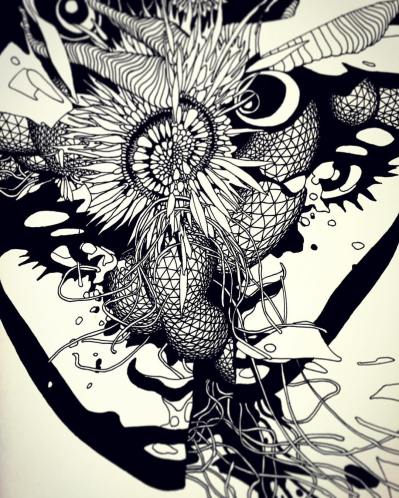
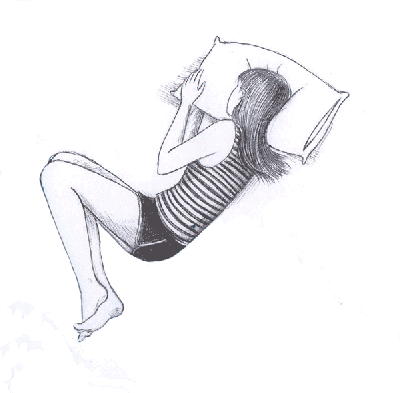 The inner voice of the daemon is making itself known to us, which is to say that a living, creative spirit, with both destructive and constructive potentiality, is revealing itself to us. This spirit will continue to manifest “demonically” and destructively, however, as long as we lack the courage to engage with it. The inner voice of the daemon can potentially become our ally, however, if we get into conscious relationship with what it triggers in ourselves. If we do not become “touched” by the daemon, to quote Jung, “no regeneration or healing can take place‚Ķif by self-assertion the ego can save itself from being completely swallowed, then it can assimilate the voice [of the daemon], and we realize that the evil was, after all, only a semblance of evil, but in reality a bringer of healing and illumination. In fact, the inner voice is a ‘Lucifer’ in the strictest and most unequivocal sense of the word.” Lucifer, the morning star, is the “bringer of the light.” If we have a strongly enough developed sense of self, we are able to objectify and enter into conscious relationship with the daemon, thereby saving ourselves from being swallowed and possessed by it. Paradoxically, relating to our daemon as a separate, autonomous “other” – an actual living being – is the very way we integrate the daemon into ourselves. We are then able to metabolize and assimilate the daemon so as to receive its blessing in support of our spiritual unfoldment. When consciously embraced and related to, instead of manifesting as a destructive demon or devil obscuring our path, our daemon introduces us to our calling and helps us find our true vocation, which is what we are here to do. Thus, hidden in the daemonic is our creative genius. This is why Jung said, “the daemonic is the not yet realized creative.”
The inner voice of the daemon is making itself known to us, which is to say that a living, creative spirit, with both destructive and constructive potentiality, is revealing itself to us. This spirit will continue to manifest “demonically” and destructively, however, as long as we lack the courage to engage with it. The inner voice of the daemon can potentially become our ally, however, if we get into conscious relationship with what it triggers in ourselves. If we do not become “touched” by the daemon, to quote Jung, “no regeneration or healing can take place‚Ķif by self-assertion the ego can save itself from being completely swallowed, then it can assimilate the voice [of the daemon], and we realize that the evil was, after all, only a semblance of evil, but in reality a bringer of healing and illumination. In fact, the inner voice is a ‘Lucifer’ in the strictest and most unequivocal sense of the word.” Lucifer, the morning star, is the “bringer of the light.” If we have a strongly enough developed sense of self, we are able to objectify and enter into conscious relationship with the daemon, thereby saving ourselves from being swallowed and possessed by it. Paradoxically, relating to our daemon as a separate, autonomous “other” – an actual living being – is the very way we integrate the daemon into ourselves. We are then able to metabolize and assimilate the daemon so as to receive its blessing in support of our spiritual unfoldment. When consciously embraced and related to, instead of manifesting as a destructive demon or devil obscuring our path, our daemon introduces us to our calling and helps us find our true vocation, which is what we are here to do. Thus, hidden in the daemonic is our creative genius. This is why Jung said, “the daemonic is the not yet realized creative.”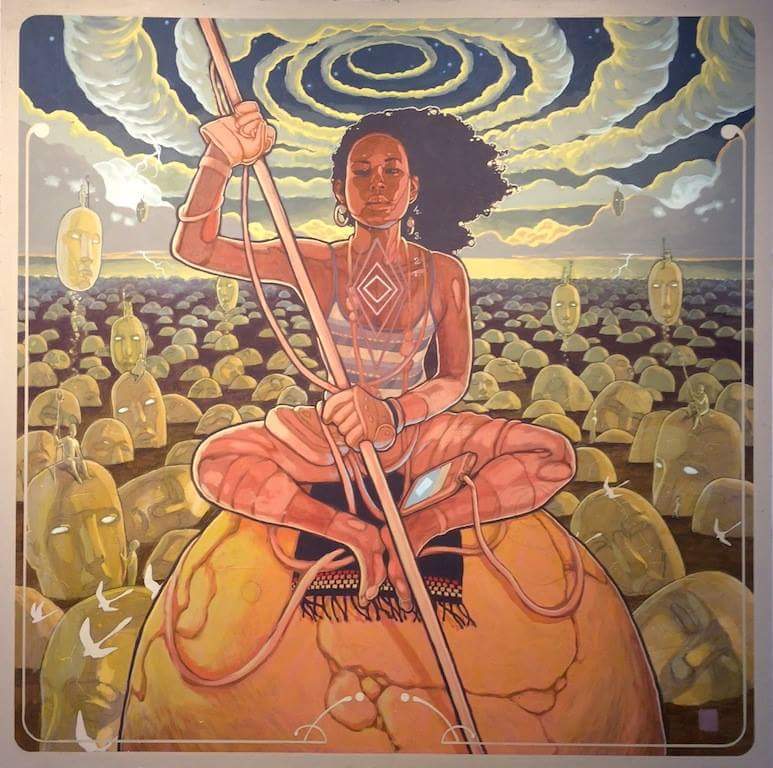
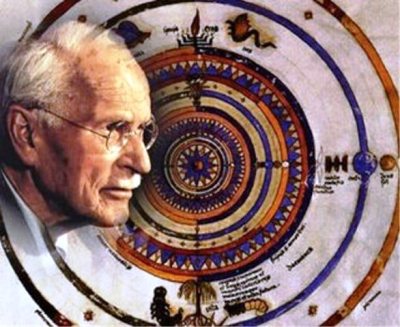 by Gary S. Bobroff via
by Gary S. Bobroff via 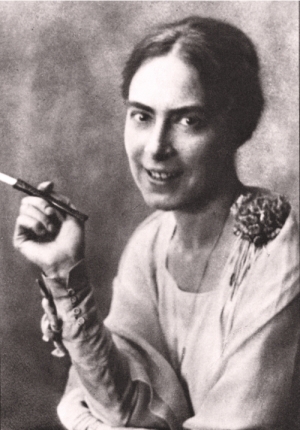
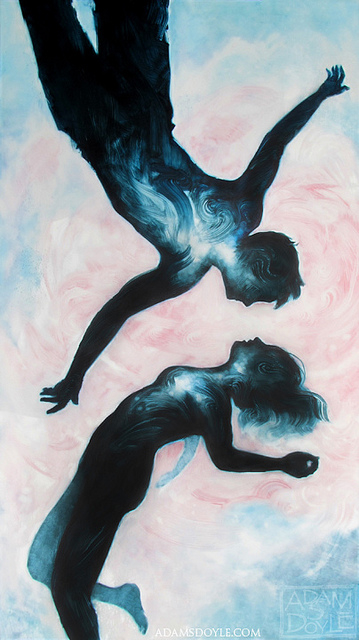
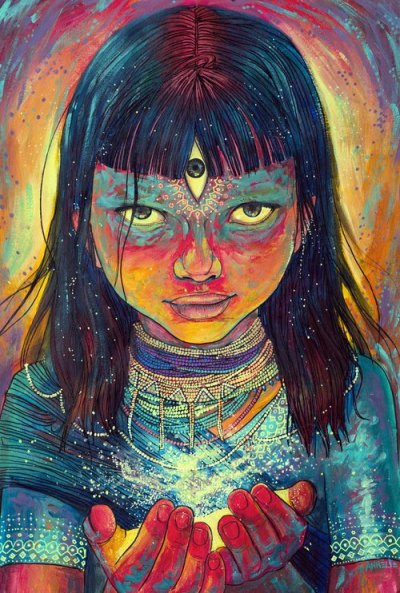 Again, there is shadow in these archetypes too. The Warrior sometimes carries the burden of not understanding, of ‘knowing not what he does,’ but at least he or she know the truth of action–right or wrong. In contrast, the Sage sometimes fails to act, because conscience sometimes does make ‘cowards of us all.’ There is also an inherent tension between the two axes, between our need for other people and between the calling of action or insight; the personal axis pulls into relationship and the impersonal axis away from them. As master Sage Nikola Tesla describes: “originality thrives in seclusion . . . Be alone, that is the secret of invention; that is when ideas are born.” The genius is quick to serve his muse, but sometimes slow to respond to the warm heart beating right beside him. The Warrior might unconsciously avoid those spaces that make him or her feel vulnerable? Does our compulsive ingenuity or armored hardness keep us safely separated from the love reaching out for us?
Again, there is shadow in these archetypes too. The Warrior sometimes carries the burden of not understanding, of ‘knowing not what he does,’ but at least he or she know the truth of action–right or wrong. In contrast, the Sage sometimes fails to act, because conscience sometimes does make ‘cowards of us all.’ There is also an inherent tension between the two axes, between our need for other people and between the calling of action or insight; the personal axis pulls into relationship and the impersonal axis away from them. As master Sage Nikola Tesla describes: “originality thrives in seclusion . . . Be alone, that is the secret of invention; that is when ideas are born.” The genius is quick to serve his muse, but sometimes slow to respond to the warm heart beating right beside him. The Warrior might unconsciously avoid those spaces that make him or her feel vulnerable? Does our compulsive ingenuity or armored hardness keep us safely separated from the love reaching out for us?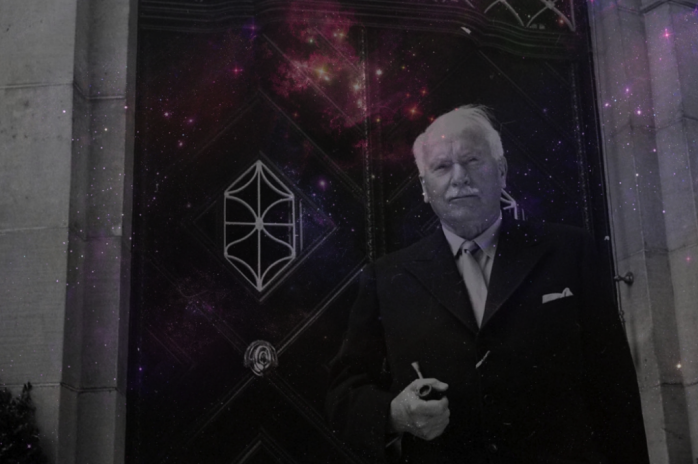
 Excerpt of Jung, Crop Circles & the Re-Emergence of the Archetypal Feminine
Excerpt of Jung, Crop Circles & the Re-Emergence of the Archetypal Feminine I believe that this subject asks of its investigators (of which you now are one) a more actively engaged participation—not a simple reading, but a ‘dance for two’. Each of us responds differently to new things and whether we bring to this topic a skeptical brow or a wide-eyed enthusiasm, we do not come to it empty-handed. It is in the nature of how we engage with our own first responses to this phenomenon that the burden of our work in response to it lays. Meeting this task involves a willingness to play with our own responses—to be in process with them, rather than attaching and identifying with our own initial reaction. I have yet to meet two people who feel exactly the same way about Crop Circles. I have also found that, over time, our engagement with the facts and theories that surround them changes and deepens. Given time, this labor yields its own fruit for each of us. Tending to this harvest begins by resisting identification with our first reactions to this material. This task is only possible, if you accompany your reading by observing and according value to your own thoughts in response to it. Write down your own responses as you read this book or look at Crop Circle images. Your first responses are often the most valuable here. Flashes of response, no matter how brief, offer the possibility of glimpsing something within us that is truly fresh and genuinely new. Participation in this engagement hosts what is evoked in us by the phenomenon and thereby brings a mirror to the new possibilities that are inherent within us.
I believe that this subject asks of its investigators (of which you now are one) a more actively engaged participation—not a simple reading, but a ‘dance for two’. Each of us responds differently to new things and whether we bring to this topic a skeptical brow or a wide-eyed enthusiasm, we do not come to it empty-handed. It is in the nature of how we engage with our own first responses to this phenomenon that the burden of our work in response to it lays. Meeting this task involves a willingness to play with our own responses—to be in process with them, rather than attaching and identifying with our own initial reaction. I have yet to meet two people who feel exactly the same way about Crop Circles. I have also found that, over time, our engagement with the facts and theories that surround them changes and deepens. Given time, this labor yields its own fruit for each of us. Tending to this harvest begins by resisting identification with our first reactions to this material. This task is only possible, if you accompany your reading by observing and according value to your own thoughts in response to it. Write down your own responses as you read this book or look at Crop Circle images. Your first responses are often the most valuable here. Flashes of response, no matter how brief, offer the possibility of glimpsing something within us that is truly fresh and genuinely new. Participation in this engagement hosts what is evoked in us by the phenomenon and thereby brings a mirror to the new possibilities that are inherent within us. (Etchilhampton, UK July 25th, 2011 formation ~ photos © Andrew Pyrka.)
(Etchilhampton, UK July 25th, 2011 formation ~ photos © Andrew Pyrka.)